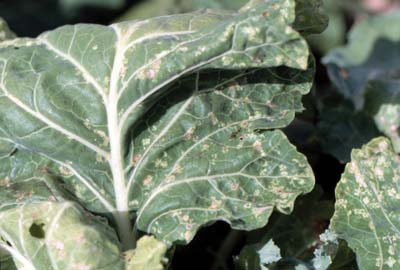To save the Web-optimized images shown below to your hard drive:
|
Click to access Display and Print quality images. |
This pest has the ability to completely destroy the crop where it is not controlled. The harlequin bug injures plants by sucking the sap out of the plant causing the plant to wilt, turn brown, and die. Vegetable crops that are attacked by the harlequin bug include cabbage, cauliflower, collards, mustard, turnips, radishes, tomatoes, eggplant, okra, bean, potato, and asparagus, but it is particularly damaging to cabbage and related crops. When low numbers of the harlequin bug are found, handpicking and destroying the adults and nymphs and egg masses may provide adequate control. Trap crops may be used in late fall after the main crop is harvested. This will reduce the number of adults that overwinter in the field. Insecticidal sprays may be applied to the foliage to control the harlequin bug.
Images
To save the Web-optimized images shown below to your hard drive:

Harlequin bug, Murgantia histrionica, feeding damage.
(Photographer: J. Castner, University of Florida)
Click to access Display and Print quality images.
|
|
Click to access Display and Print quality images. |
|
|
Click to access Display and Print quality images. |
|
|
Click to access Display and Print quality images. |